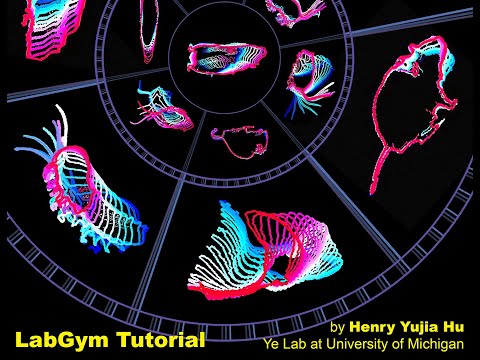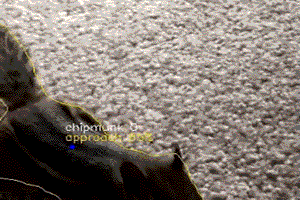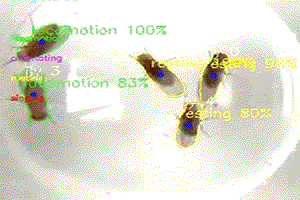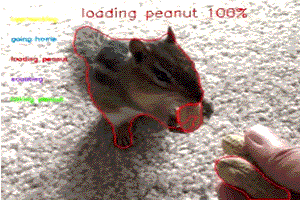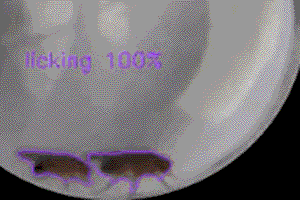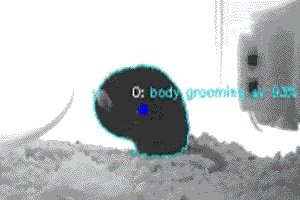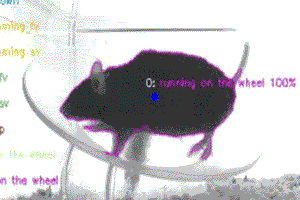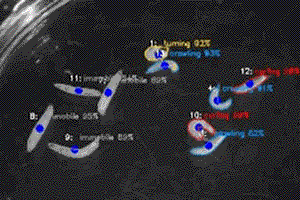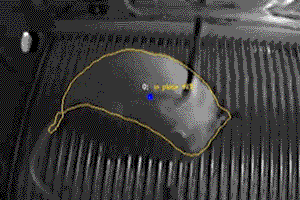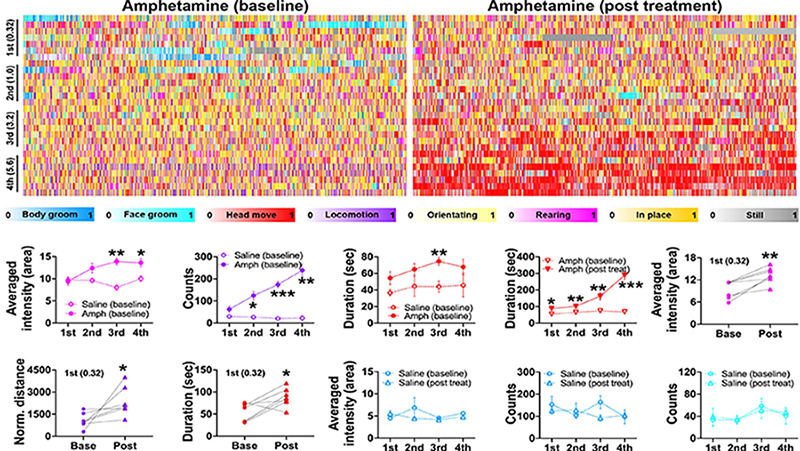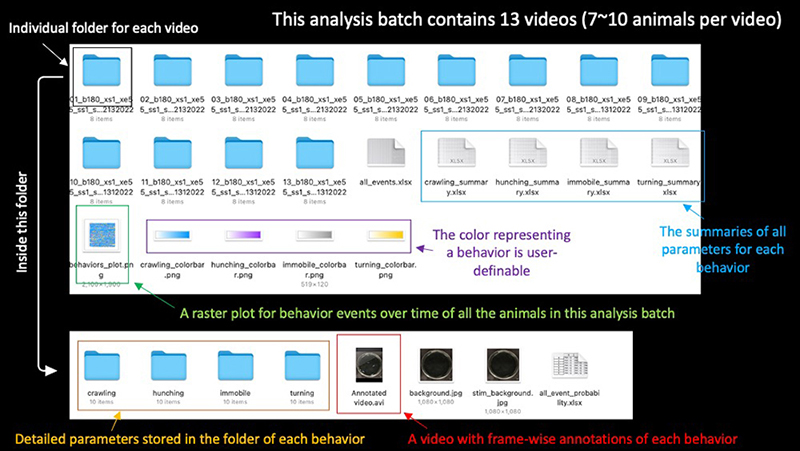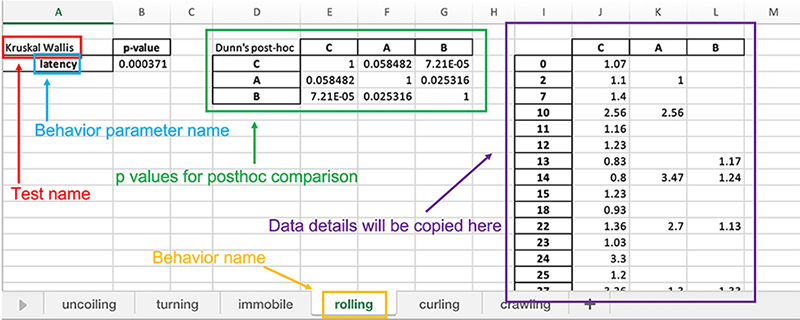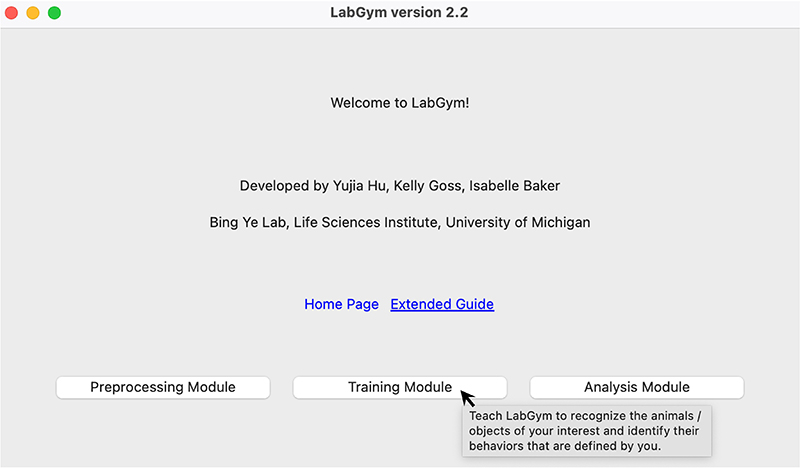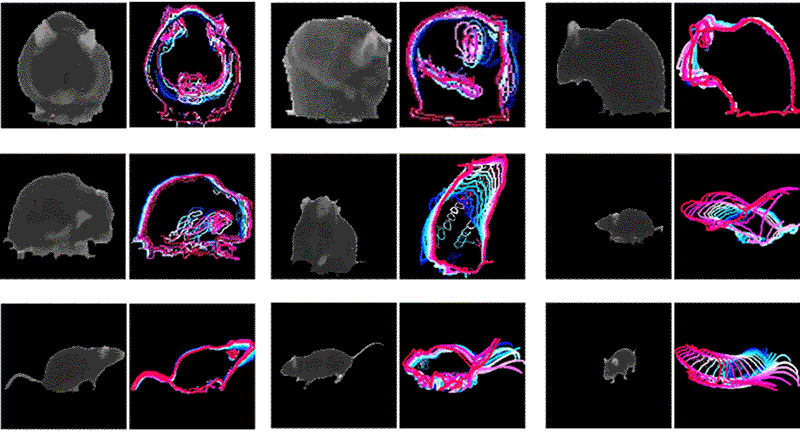Quantify user-defined behaviors
Project description
LabGym: quantifying user-defined behaviors
LabGym can:
- TRACK multiple animals / objects without restrictions on recording environments
- IDENTIFY user-defined interactive or non-interactive behaviors without restrictions on behavior types / animal species
- QUANTIFY user-defined behaviors by providing quantitative measures for each behavior
- MINE the analysis results to show statistically significant findings
A tutorial video for a high-level understanding of what LabGym can do, how it works, and how to use it:
Cite LabGym: https://www.cell.com/cell-reports-methods/fulltext/S2667-2375(23)00026-7.
Identifies user-defined behaviors
Three modes of behavior identifications to fit different scenarios:
-
'Interactive advanced'
Distinguishes which individual does what in an interaction, like which finger is 'helding peanut' / 'offering peanut', when the chipmunk is 'taking the offer' / 'loading peanut', and which peanut is 'being held' / 'being taken' / 'being loaded'. Or, which fly is singing a love song and which fly is being courted.
-
'Interactive basic'
Assesses the whole interactive group as one for faster processing speed than 'Interactive advanced'. This mode does not distinguish behaviors of individuals, so select it if all the animals in the interactive group do the same behaviors, or if you don't care about which individual does what.
-
'Non-interactive'
Identifies non-interactive behaviors of individuals.
Quantifies user-defined behaviors
Calculates diverse motion / kinematics parameters for each behavior, such as count, duration, latency of a behavior, and speed, acceleration, distance traveled, motion vigor, motion intensity during a behavior. Outputs annotated videos and a temporal raster plot for every behavior event for each animal at each frame in an analysis batch, and spread sheets for storing the calculated behavioral parameters.
Mines the analysis results
Displays significant findings, such as the behavioral parameters that show statistically significant difference among different groups of your selection, and then show the data details.
Easy to access
NO NEED of writing code because of a self-illustrative user interface. NO NEED of GPUs (but can be even faster on NVIDIA GPUs with CUDA toolkit installed).
How to use LabGym?
Extended user guide: (https://github.com/yujiahu415/LabGym/blob/master/LabGym%20user%20guide_v2.1.pdf).
Put your mouse cursor above each button in the user interface to see a detailed description for it.
'Preprocessing Module' enhances video contrast / trims videos to include only necessary time windows / crops frames to exclude unnecessary regions.
'Training Module' is for you to teach LabGym to detect animals / objects of your interest, and to recognize behaviors that are defined by you.
'Analysis Module' analyzes videos, outputs analysis results, and mines analysis results.
How to teach LabGym to recognize behaviors defined by you
First, use 'Generate Behavior Examples' button to input some videos and generate stand-alone behavior examples. Each behavior example includes an Animation and its paired Pattern Image, which spans a duration (a behavior episode) defined by you. Next, use 'Sort Behavior Examples' button to select and sort the behavior examples based on their types. Finally, use 'Train Categorizers' button to input the sorted behavior examples and train a Categorizer.
Three different modes of behavior examples:
-
'Interactive advanced'
Each 'spotlight' Animation / Pattern Image contains all characters in an interactive group with a 'spotlight' on the main character. Sort them based on the behavior type of the main character. For example, the below 4 are: 'taking the offer'; 'being taken'; 'being held'; 'offering peanut'.
-
'Interactive basic'
Each Animation / Pattern Image contains all the animals / objects of your interest in a video. Sort them as one. For example, the below 3 are: 'orientating'; 'singing while licking'; 'attempted copulation'. The sorting focuses on the courtship steps of the male fly and ignores what the female fly does (suppose we are only interested on studying the courtship behaviors of the male flies).
-
'Non-interactive'
Each Animation / Pattern Image is a 'monodrama' of each animal / object.
How does LabGym detect animals / objects?
Two detection methods to fit different scenarios:
-
Subtract background
Fast and accurate and is the first choice for videos with static background and stable illumination. No training is needed but you need to specify a time window during which animals are moving, for background extraction. Shorter time window = faster processing speed. Typically, 10 to 30 seconds are sufficient.
How to select an appropriate time window for background extraction?
This video is of 60 seconds. The following three images are backgrounds extracted using the time windows of the first, second, and last 20 seconds, respectively. In the first and last 20 seconds, the mouse mostly stays either in left or right side and moves little and the extracted backgrounds contain animal trace, which is not ideal. In the second 20 seconds, the mouse frequently moves around and the extracted background is perfect:
-
Use trained Detectors
This method integrates Detectron2 (https://github.com/facebookresearch/detectron2). It is more versatile but slower than the Subtract background method. It also differentiates individuals when they collide and is particularly useful for the 'Interactive advanced' mode. Use a GPU or decrease the frame size during analysis to increase the processing speed.
To train a Detector:
- Use ‘Generate Image Examples’ button to extract images (frames) from videos.
- Use free online annotation tools such as Roboflow (https://roboflow.com) to annotate the outlines (NOT bounding boxes) of animals / objects in images. Select 'Instance Segmentation' for annotation type and 'COCO instance segmentation' format when exporting the annotation, which is a ‘*.json’ file. When in 'Interactive advanced' mode, select images in which individuals collide and annotate the colliding boundaries well. Let the Detector see diverse colliding scenarios during training can significantly prevent individual identity switching during analysis.
- Use ‘Train Detectors’ button to input the annotated images and train your Detectors.
Installation
-
Install Python3 (version >= 3.9.7)
Do not install the latest version of Python3 since it might not be compatible yet.
-
In your terminal / cmd prompt, type:
python3 -m pip install LabGym -
If want to use Detectors, after LabGym is installed, install Detectron2 separately (https://detectron2.readthedocs.io/en/latest/tutorials/install.html):
python3 -m pip install 'git+https://github.com/facebookresearch/detectron2.git'
Initiate user interface for each use
-
Activate Python3 by typing 'python3' or 'py' in the terminal / cmd prompt. Then type:
from LabGym import gui -
Then type:
gui.gui()Now the user interface is initiated and ready to use.
If you encounter any issues when using LabGym:
Refer to the open / closed issues or contact the author: Yujia Hu (henryhu@umich.edu).
Changelog:
v2.1:
- Improved the user interface and the Extended User Guide.
- Added a tutorial video.
v2.0:
- Implemented the analysis pipeline for complex interactive behaviors.
- Major improvement on analysis speed.
- Bug fix.
v1.9:
- Implemented Detector-based detection method. Now the changing background or illumination in videos is no longer a problem for LabGym.
- Implemented data mining functional unit.
- Implemented preprocessing functional unit.
- Simplified code and further optimized the processing speed.
- Implemented basic analysis for interactive behavior.
v1.8:
- In previous versions, if no animal is detected in a frame, this frame will be skipped. From now on, such frames will not be skipped, and the behavioral classification and quantification will be output as 'NA's so that the raster plots and the quantification results can be perfectly aligned for every frame with other data (e.g., ephys recordings).
- An 'uncertain level' can be added into the Categorizers for reducing the false positives in behavior classification. The Categorizer will output an ‘NA’ if the difference between probability of the highest-likely behavior and the second highest-likely behavior is less than the uncertainty level.
- Simplified the user interface.
- Optimized the processing speed.
v1.7:
- Improved the background extraction and the tracking, making them faster and more accurate.
v1.6:
- Added a version checker. If a newer version of LabGym is available, users will see a reminder when initiate the user interface.
v1.5:
- Simplified the user interface and made it more self-illustrative.
- Added an option of whether to output the distances in pixels when calculating behavior parameters. Previously all the distances were just normalized by the size of a single animal.
v1.4:
- Made the time points in the output time-series sheets more precise.
- Fixed an error when using the option of 'load background image'.
v1.3:
- Improved background subtraction and the tracking is more accurate.
- Now LabGym not only can work for videos with illumination transitions from dark to bright, but can also work for those from bright to dark.
v1.2:
- Now LabGym can also be used in categorizing binary behaviors (yes or no behavior, or behaviors with only 2 categories)
- Fixed a bug that caused a path error if users did not select any behavior parameters for quantification.
- Now users have an option to choose whether to relink newly detected animals to deregistered IDs.
v1.1:
- Changed a typo in setup.
v1.0:
Initial release.
Project details
Release history Release notifications | RSS feed
Download files
Download the file for your platform. If you're not sure which to choose, learn more about installing packages.



